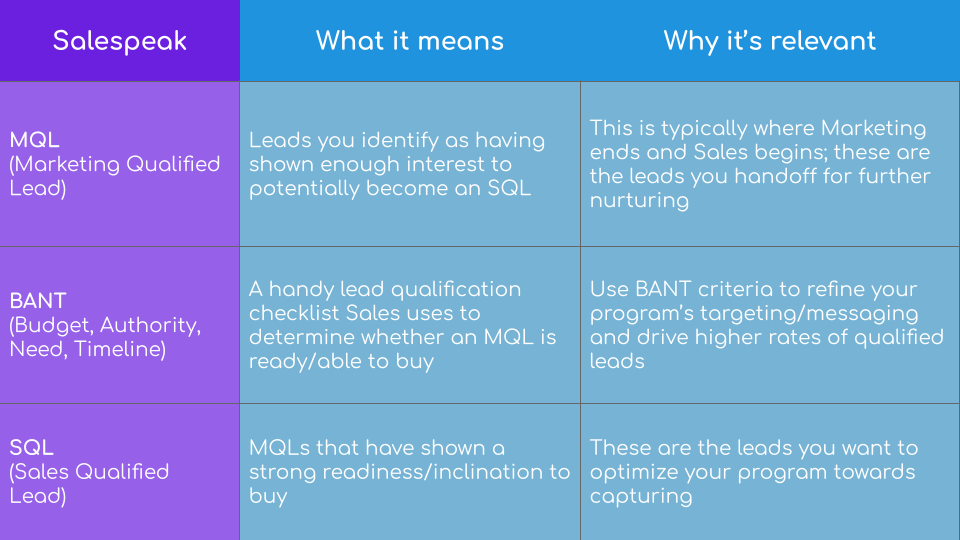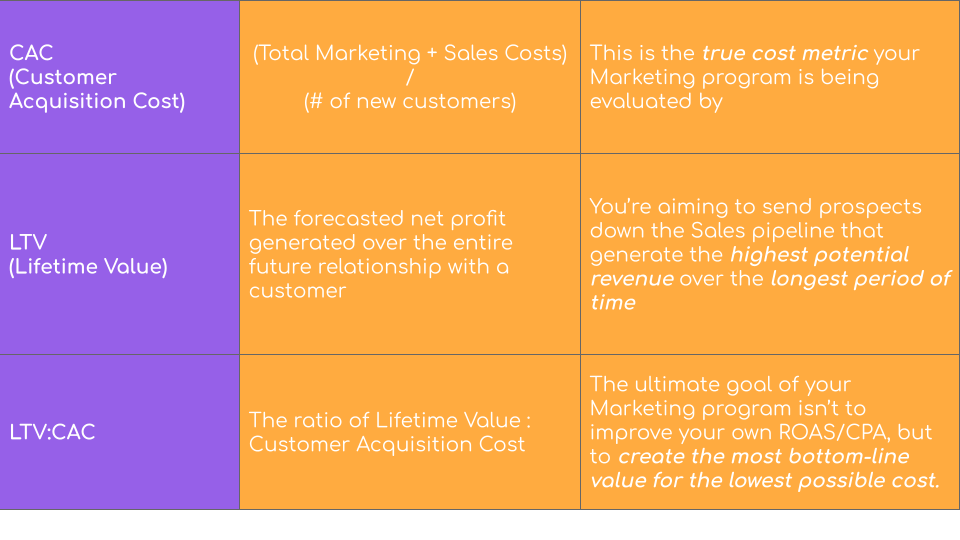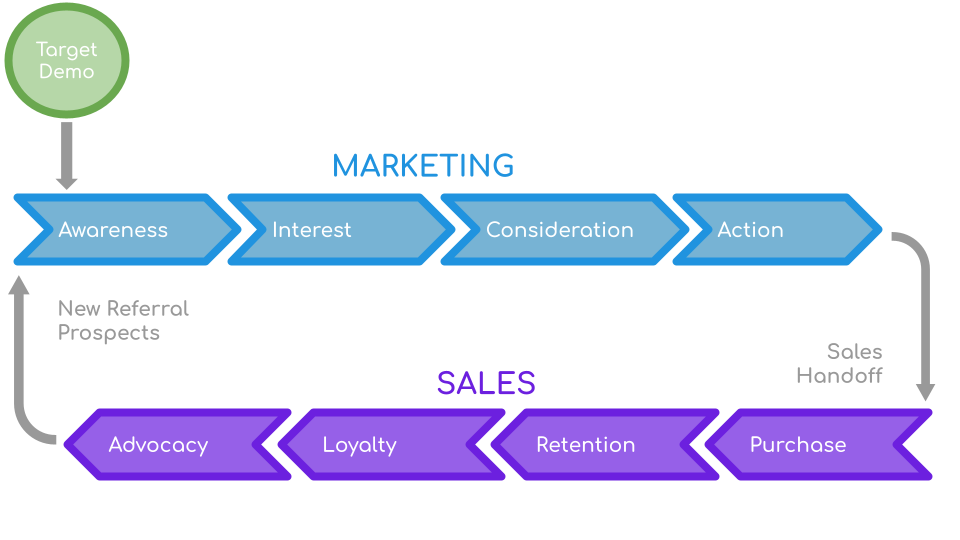
How you can boost your marketing program by plugging straight into the sales pipeline
Is Marketing science or art?
Now I don’t consider myself to be “a creative” in even the slightest sense, so I tend to side with the science camp there – or at least I used to.
But back in October 2020 – when I started my new role as a Client Success Manager (let’s keep it simple and just say CSM from now on) – I started to think a little differently. My studies up to that point were focused squarely on the science side of Marketing (data analysis, platform deep dives, marketing theory). Yet in my new role as a CSM I suddenly found myself planted on the art side of Marketing, which required a level of nuance that doesn’t always come easily to me.
Being a CSM is a fun hybrid role for a marketer because you get to do the high-level strategizing and execution that we often find so engaging, while also doing much of the relationship building, client nurturing and retention usually associated with B2B selling. That, however, is where the art side of Marketing comes into play.
There is certainly an undeniable art to selling, and transitioning into this role gave me a whole new appreciation for Sales as I tried better learning its intricacies and tying it back to my daily work. The challenge for me, however, was switching between the macro “big picture” view I loved living in as a data-driven marketer, to the more micro “tunnel vision” view focused on individual client needs that’s critical to being a good salesperson (and by extent, a good CSM).
In other words, I had to learn how to paint with a fine-tipped brush, not a broad one.
Naturally, there were some growing pains.
This is also why I sucked so much as a junior specialist / campaign manager, because I always felt blind without the available context or the ability to step back and analyze the challenge from a distance. Which is to say that the closer I get to a problem, the less I can typically see (and many marketers might agree).
So how could I grow past my “micro-vision” limitations? By learning more about how the Sales world operates and proactively applying those lessons to not just improve the quality of my Marketing programs, but the quality of my client relationships too.
Earning that deeper understanding helped me realize that Marketing is – most definitely – both science and art.
Once that clicked in my head, the bottom-line business value of understanding Sales as a marketer became even more apparent. As a result, so much of what I do now focuses on trying to achieve alignment between my Marketing programs and my clients’ own Sales teams because I see the obvious value in both functions working towards common goals.
“But Phil,” I hear you ask, “You’re not in Sales – you’re barely even a marketer! What do you know about pipelines or sales qualified leads or close rates or *insert buzzword*?”
Touché. But that’s exactly the point. If Marketing is supposed to plug directly into Sales, and the value of such alignment is inherently visible to anybody that bothers to see it, then why do we hardly ever know what happens to our leads once they enter the pipeline?
But therein lies the rub – a lot of the time, the prevailing sentiment is one of Sales vs Marketing. But it isn’t. It’s Sales and Marketing, just like Marketing is both science and art. Which is why aligning your programs with your client or company’s Sales processes is so essential to the success of your own Marketing programs.
Dispelling An Outdated Cliché
Much has already been written (and by brighter minds than mine) about ending the war between Sales and Marketing but at the end of the day, each function’s ultimate objectives aren’t far removed from each other. Sure, Marketing turns prospects into leads, and Sales turns leads into customers. But when alignment is reached, both departments work in unison to shorten sales cycles, lower acquisition costs, and provide as much value as possible for their client or company and the customers they serve.
So if we can all acknowledge the value in alignment, why is there so much (perceived) tension between the two functions?
From where I’m sitting, the “war” is fundamentally a battle of macro vs micro, in that Marketing needs to essentially cherry-pick who they think would be the most valuable customers to target at scale, whereas Sales then needs to be hyper-focused and put the blinders on to close the leads that come through to them. No function is inherently more valuable than the other, but they are two sides of the same coin. And both sides are ultimately about making as much coin as possible.

That’s exactly where the tension starts kicking in – both teams think they’re the ones driving all the revenue. So expectedly, things get even messier when they’re forced to compete for the same scarce resources:
- When you’re client-side, those functions tend to fight over the same fixed “revenue” budget. This immediately puts them in a zero-sum game where winning a higher budget comes at the expense of cuts to the other. No wonder things get so antagonistic.
- In the agency world, you have to earn access to your client’s Sales team which only comes once you’ve built enough trust and rapport first. Even then, why would said Sales team bother humouring your requests for custom insights when doing so means adding more work to their plate? They’re busy people with their own quotas to hit after all.
But where there’s tension there’s also room for resolution. And luckily, bridging the gap between the two departments is simpler than it might seem because both need to prioritize understanding the customer first to drive any revenue at all. That’s where you as a marketer can step in to let some of the air out the room – and boost your programs in the process.
So how can you plug Marketing into the Sales pipeline and make life better for all functions involved? I’m sure glad you asked.
Integrate your metrics
The best way to start playing nice is to acknowledge you’re both working towards a common goal: generating revenue. That’s ultimately what your Marketing should be focused on, and why it’s crucial you align your program’s KPI with Sales’ – it’s the only way to ensure you’re focusing your energy on what’s actually driving bottom-line value.
That means we need to leave the vanity metrics behind and go beyond just the standard “we achieved x clicks for y cost”. And sure, it’s great when your campaigns shatter your lead targets. But if those aren’t qualified leads you’re driving then what’s the point? Otherwise you’re just wasting Sales’ time and your own precious Marketing dollars on irrelevant prospects. Aligning your KPI helps you score the leads you’re sending down the sales pipeline, and determine whether they’re worthwhile or you need to adjust your targeting.
But it can be tough to integrate your metrics to focus on shared objectives when one team talks funnels and leads and the other talks pipelines and close rates. To truly measure the impact of your Marketing programs, you need to be adept at translating Salespeak into simpler terms:


Understanding how each bit of shared jargon relates to your shared revenue objectives comes in real handy when evaluating how your own Marketing leads are progressing down the Sales pipeline.
Define your funnels
Nobody likes uncertainty, especially when there’s revenue on the line. Sure, you’re pretty certain about what your own funnels look like and how long it takes users to flow through them. But if you don’t know what happens to your leads once you hand them off to Sales – or even worse, what their Sales cycle looks like – then uncertainty is just what you get.
It’s okay to admit it – you don’t know how long it takes your Sales team to turn a lead into a customer either. In fairness, that Sales cycle varies quite a bit depending on who you’re selling to. On the one hand, selling direct to consumers (B2C) is fairly straightforward. It’s usually a shorter sales cycle as the final purchasing decision ultimately rests with one person – the end user.
But selling to businesses (B2B)? That’s an entirely different beast because you aren’t always selling directly to the individual making the purchase decision, but rather the sphere of influence around that person (do you think a CMO is doing product research themselves when evaluating different marketing automation software?). Layer in some macroeconomic factors and the B2B Sales cycle gets even more complex.
Which is exactly why you need to jointly define the steps in your respective funnels – it’s the best way to map out how users flow through the complete B2B buying journey, and lets you identify opportunities to really turn the tap on the Sales pipeline with some timely Marketing initiatives.

Break down data silos
Now that you’ve got your KPI and funnels aligned, it’s time to start tapping into the Sales team directly for their insights (while causing the least disruption possible of course. Quotas and all you see.) to keep driving a steady flow of prospects streaming. Marketers are data-driven folk after all (as I so love saying), and 1st-party Sales data is – quite literally – as good as it gets.
And just like there are two types of data (quantitative and qualitative) there are likewise two data silos you need to break down to start leveraging those actionable Sales insights.
Breaking down that first silo is about gaining access to all the juicy lead data your Marketing campaigns drove in the first place. Almost all major digital ad platforms support CRM integrations in one form or another (like this handy Salesforce to Google Ads integration), so why not pick that low-hanging fruit first? These integrations are so powerful because they attribute real lead performance in your CRM directly back to your ads platforms, which lets you confidently identify and focus on the parts of your program that are actually generating bottom-line value.
While these integrations might not always be feasible (especially if they require some custom coding or wholesale changes to your CRM structure), seeing that granular Sales attribution tied back to your Marketing program is definitely worth the trouble if you can pull it off.
You know what is feasible at almost any level? A good old-fashioned lead scoring sheet. While it takes more manual reconciliation and input than a CRM integration would, as long as you have the raw lead data and a mutual definition of what a “qualified” lead looks like it’s an easily actionable way to evaluate the impact your Marketing program has on the Sales pipeline.
Beyond being the gatekeepers of 1st-party lead data, your Sales team is a treasure trove of qualitative insights – you know, the insights that actually contextualize the vast amounts of data you’re going to be poring over. That’s the second data silo you need to break down. Luckily, all you have to do there is start asking questions (and the right questions at that).
It’s not enough to just ask your Sales team when the peak selling periods throughout the year will be (though you definitely should be doing that). You need to start asking them who it is they’re selling to because that helps you refine your own program’s persona targeting. Ask them which unique selling points are routinely compelling prospects to choose your solution over a competitor’s. Ask their opinion about the quality of inbound leads and what we could be doing differently to improve them.
More importantly, ask them what tasks the prospects they talk to are looking to accomplish, what their main pain points are that they’re looking to alleviate, and what they typically stand to gain most from using your product or service. As the people directly nurturing the leads you send down the pipeline, who else would be more attuned to your prospects’ needs?
These are all useful insights that you can use to update your audience segmentation, your messaging, your paid media channels, your marketing mix, your everything – you just have to ask for it

Achieving Alignment
I’ve gone on for just about 2,000 words here (if you made it this far thanks for bearing with me) so I really hope I’ve already answered this question, but if not then I’m happy to answer it now – what is it exactly that marketers need to understand about Sales?
That aligning with your company or clients’ Sales teams plays a huge role in the success of your own Marketing programs.
And while it might take a bit of effort to realize it, doing so certainly helps supercharge performance for both functions. The Sales insights you leverage help improve the quality of leads you’re sending down the pipeline, which in turn translates to more customers and higher close rates, which itself gets attributed back to your programs, and so the improvement cycle continues.
Remember, at the end of the day your program is evaluated on the actual dollars and cents impact that it generates (i.e. revenue), not the volume of (un)qualified leads you’re passing through to your CRM. That’s why achieving alignment is so critical – it lets you plug your Marketing program straight into the Sales pipeline to create the most bottom-line value possible.
But crafting a killer Marketing program that makes a big business impact? That definitely takes both science and art.
Hopefully this post has given you some useful food for thought when you’re trying to spruce up your own Marketing programs. And if you’re a salesperson that thinks I’ve got this all completely wrong, then please especially get in touch – I’m always eager to learn.
